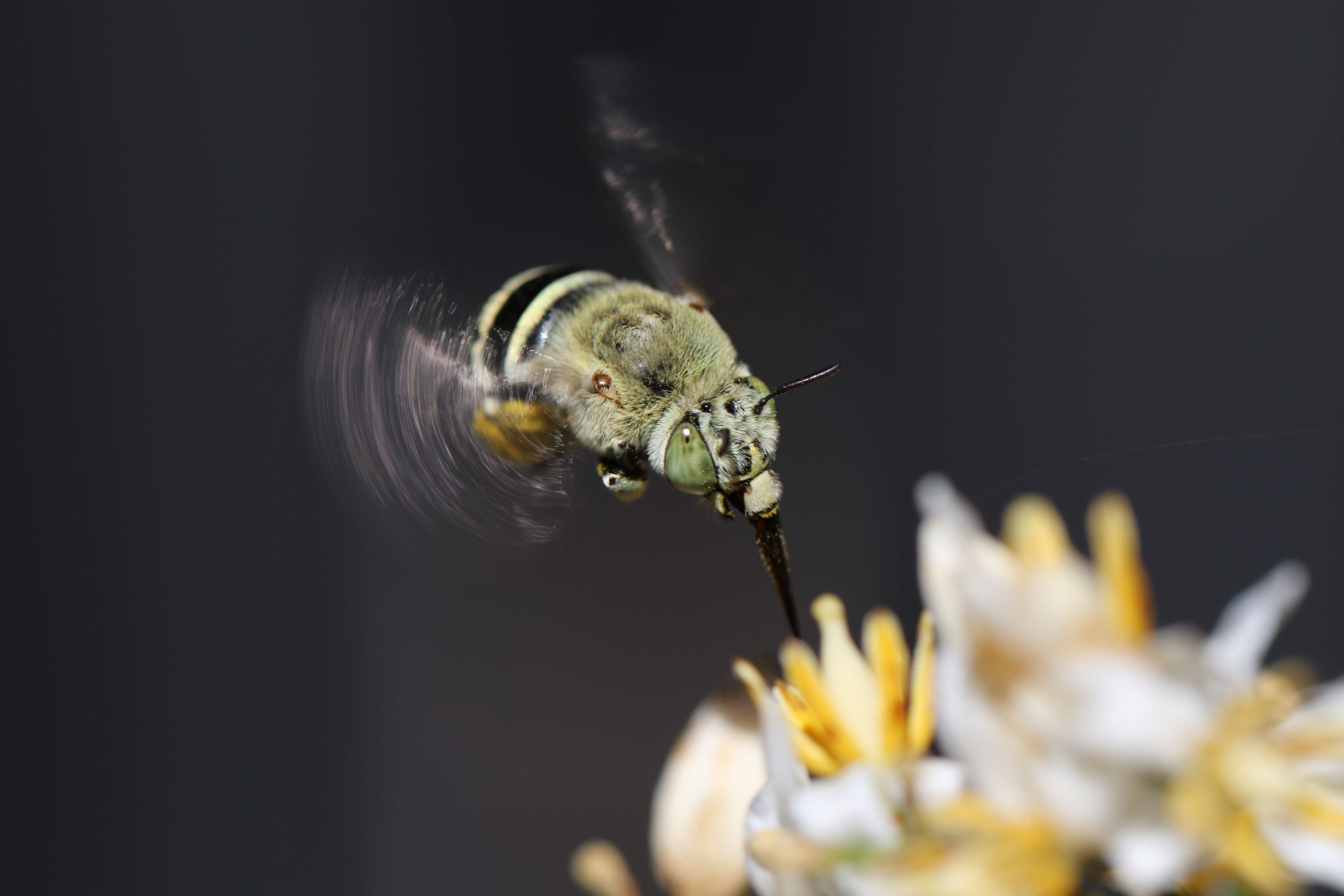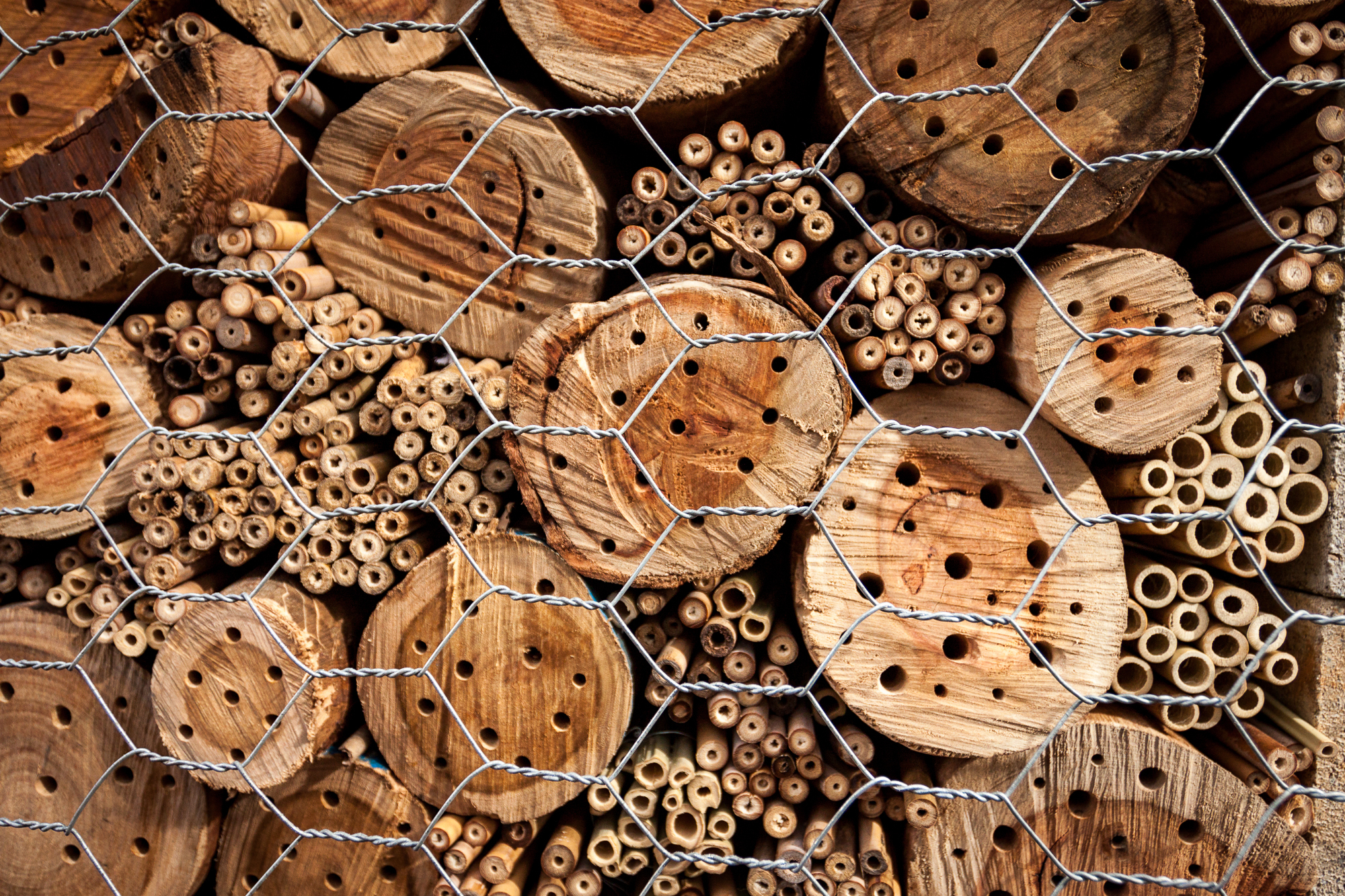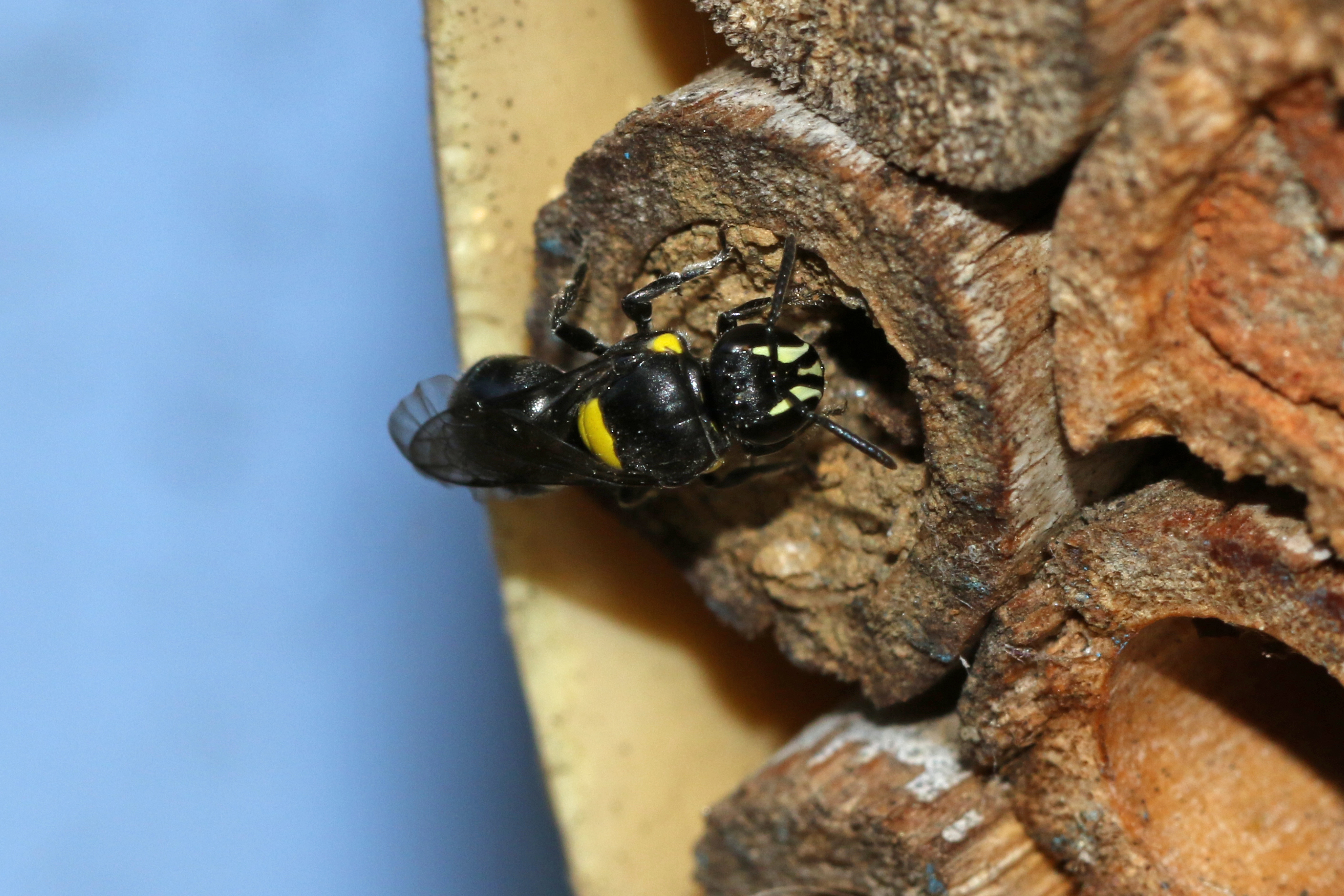South Australia’s native bees are fantastic pollinators for our Aussie plants. Here’s 6 steps to help attract them to you garden – and why they’re important.

All bees are important pollinators for plants. But some Australian native plants depend on being pollinated by native bees.
Metropolitan Adelaide has around 200 native species of bees with our 3 species of blue-banded bees usually stealing the beauty show. These species of blue-banded bees are very difficult to tell apart, and to get science-y here’s their names: Amegilla asserta, A. chlorocyanea and A. murrayensis.
Some native bees – like the blue-banded bee – can buzz pollinate, which means shaking flowers and causing them to release pollen – a bit like salt-and-pepper shaker.
Tomatoes and native plants such as guinea flowers, and flax and chocolate lilies (find these on the Botanic Gardens Plant Selector) rely on this buzz pollination to grow fruit.

Honey bees vs. native bees
Did you know that Adelaide’s super abundant European honey bee was actually introduced?
These honey bees came to Australia in 1822. They are the only introduced bee species in metro Adelaide.
Honey bees actually compete with many birds and animals by stealing their food of nectar and pollen, and taking over their homes by turning them into hives.
Here’s some tips of how to tell honey bees and native bees apart:
Introduced honey bees:
- quite large with hairy eyes
- brown-orange abdomen (but not always identical) and black, bare legs
- noisy/buzz in flight
- live in large groups in hives that they’ve either made from scratch or have created in hollows
- have a queen and workers (known as eusocial)
- worker bees will aggressively defend their hive
- have a painful sting that is barbed and stays in our skin (and they die after losing the barb)
- make honey – but a surprisingly small amount of per bee around a 12th of a teaspoon in their lifetime.
Native bees:
- come in a range of sizes with a body length ranging from 2 mm to 1.5 cm
- Adelaide’s species don’t build hives
- mostly live alone (aka solitary), but some share a nest entrance
- many species nest in the soil and some other nest in wood
- not aggressive – only sting when you grab them
- do not have a barbed sting, so after stinging they live to tell the tale.

As honey bees are pushy, our local native bees need a helping hand. You can help these little guys and gals out in your own garden.
Here’s 6 steps to help attract them to your yard:
1. Leave some open soil
More than half of Australia’s native bee species nest in the ground. They need access to open soil and do not nest in lawn or under mulch. So leave some open ground for our native bees to nest.
On top of access to open soil, they also prefer their space to have:
- sloping areas where water can run off (e.g. edges of garden beds or vertical ridges)
- patches of compacted soil
- drier areas that are not regularly watered, and
- minimal people and animal traffic.
A good start can be to look for existing nests. You’ll see small perfectly-round entrances, sometimes close together, and if you are lucky, you’ll see a bee leaving or entering with pollen. That’s a give-away to not mulch or dig in that spot.
2. Try alternative landscaping fabric
Black plastic or other landscaping fabric is great to prevent weeds, but they also prevent native bees digging a nest in the soil.
If you really need a barrier, try newspaper. It’s easy for the bees to rip through and it will compost over time too.
3. Avoid chemical pesticides
Bees are insects, and nearly all insecticides will kill them, so it’s best to avoid them. If you must use a pesticide, use products that are approved for organic growing.
Pesticides to warn off weeds or fungal infections can also deter native bees, but are generally less harmful.
Top tip: Struggling with aphids on your fruit trees? Try sticky tape (but a special type for plants) on the trunk to remove ant access. This will give the good bugs, including parasitic wasps, a chance to get the problem under control.
4. Plant the right native plants
Bees only eat pollen and nectar from flowering plants. Check out this list for flowering plant options.
It’s best to have a selection of flowering native plants because different bee species are present at different times of the year and have different diets.
Some native bees are very fussy and won’t even visit flowers of introduced species – they don’t consider them food! So, it’s best to stick to native plants to entice native bees to your yard.
Top tip: The native small carpenter bee (which grow to a tiny 8 mm) hibernates inside of hollowed out canes or vines over winter and then nest in them over spring. So to attract these bees to your yard plant species that have vines or canes (like a grapevine) and remember when you’re pruning to leave a stretch of about 10 cm above nodes on the branches to allow room for a nest.

5. Leave dead tree trunks in your yard
Resin, masked and leafcutter native bees nest in dead tree trucks inside tiny holes made by beetle borer bugs.
To keep safe from ants the bees will only go for dead tree drunks that are higher off the ground, rather than fallen branches.
So if you have a dead trunk in your garden, consider leaving it – it can make a lovely feature, and an excellent home for many bees!
Top tip: Try building an artificial bee hotel. You can create these artificial homes by bundling about 15 pieces of bamboo (4–8mm entrance holes) together and mounting it under an eve or thick branch to protect it from sun and rain. Alternatively, drill some holes into a block of wood or poke holes in drying clay. Find out more about making bee hotels.

6. Mow the lawn less
This list is fast becoming a way to save time on household chores!
Native plants are the crème de la crème for native bees, but many species will also feast on flowering weeds if there’s nothing else available.
If you mow the lawn too regularly, those weeds won’t have a chance to flower and you won’t get native bees visiting.
While they don’t like pollen from grass, those stray weeds that pop up in your lawn sometimes can provide nourishment.
Having some flowers, native or not, is definitely better than none.

Where to next?
Why not complement your bee-friendly yard with some butterflies too.
Here’s all you need to know to transform your yard into a butterfly wonderland. Some of the tips, like leaving bare ground and reducing chemical use, are the same.
Find out more local gardening tips
Just beginning your gardening journey? Head to our gardening hub for more tips and tricks.
Hero image courtesy of Jeremy Gramp.